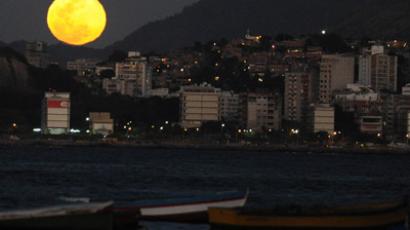Sun burst: Collapsing solar filament caught on camera
A gigantic solar filament collapse has been caught on a NASA observatory camera. The stunning video covers nearly 3 hours compressed into half a minute. The event resulted in a coronal mass ejection and a small-scale geomagnetic storm on Earth.
The footage shot in extreme ultraviolet light shows the last hours of an arc of relatively cold plasma, which was kept stable by magnetic forces, but collapsed on August 31. The filament explodes, releasing a burst of radiation and coronal mass into space.
The ejection delivered a glancing blow to Earth’s magnetosphere, triggering a moderate level geomagnetic storm, the NOAA Space Weather Prediction Center reported. By Tuesday, however, radiation levels went below the minor event threshold.
A solar filament, also called a solar prominence if it is observed against space, consists of hot ionized hydrogen and helium looping hundreds of thousands of kilometers from the sun’s surface into the relatively hotter corona. It can persist for months before ceasing to exist.
Astrophysicists so far have no comprehensive theory as to how such structures are formed.














